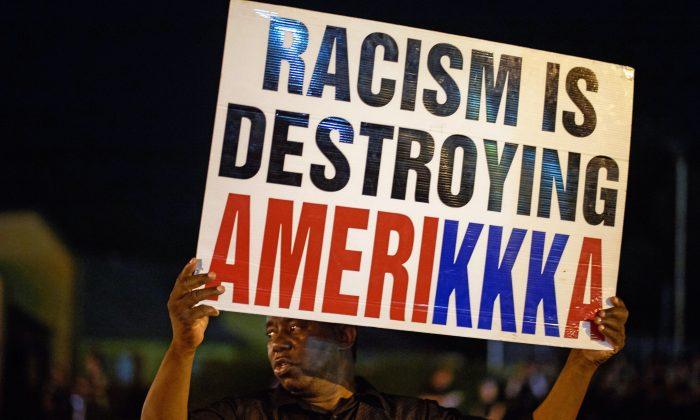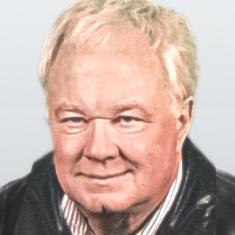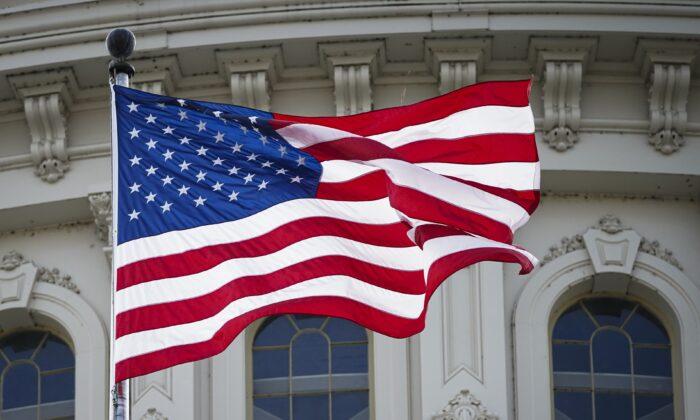Cui bono, Latin for “who benefits,” is a question often raised in courts of law to point out that the person who appears to be in a position to gain the most from a crime is most likely to be the guilty party.
In a more general way, the question invites a search for motives behind the development of specific attitudes, policy positions, and human endeavors that influence the evolution of a society. It’s an inquiry that comes naturally to those considering the advantages or disadvantages of supporting a particular course of action.
US Race Relations Once Appeared to Be Improving
Consider for a moment the direction of race relations in the United States over the past several decades. Up until the past 10 years or so, dispassionate observers of American society saw good reasons to conclude that interracial relationships in the United States were steadily improving.The relationship between black and white Americans began with the dark legacy of slavery in the southern states. That chapter ended in civil war, and the Emancipation Proclamation. Black freedom was temporarily frustrated by local segregation policies and “Jim Crow” laws. But the development of the civil rights movement and the passage of the Civil Rights Act of 1964 finally ended legal discrimination on the basis of race, color, religion, sex, or national origin. It was considered to be a crowning achievement in U.S. history.
Even before the civil rights legislation of the 1960s, the post-war integration of the U.S. military had begun to knit Americans together in ways that had been previously unimaginable to white Southerners.
As a Canadian kid in the 1950s, I recall spending my summers with my newly-wed aunt and uncle in Hampton, Virginia, where the separation of “white” and “colored” beaches, amusement parks, fishing piers, theaters, restaurants, and public washrooms all appeared to be accepted as part of the natural order of the South.
Throughout the late sixties and early seventies, my regular visits to Virginia were interrupted by summer jobs and university studies. By the time holiday trips led me back in the mid-seventies, my Newfoundland-born aunt had become a U.S. citizen and a bank manager. Stationed at Norfolk Naval Base, my uncle had worked his way through the lower ranks of the military to become a Chief Master at Arms.
During the course of my visits throughout the late seventies and eighties, I couldn’t help noticing that things were different in Hampton. Through work and service connections, my aunt and uncle’s social connections had broadened considerably. House parties and BBQs included black work colleagues, and my former “good old boy” southern uncle had acquired a remarkable new respect for his African American counterparts in the U.S. Navy.
The Civil Rights Act had delivered the coup de grâce to Jim Crow and appeared to halt the endless repetition of black marches and aggressive police crackdowns that had appeared regularly on TV networks across North America.
The era ended sadly with the assassination of Martin Luther King. But, well-meaning, if not always well-thought-out, affirmative action policies, the expansion of the federal Civil Rights Commission, the creation of the Equal Opportunity Commission, and other legislative measures led to the advancement of scores of African American men and women in politics, the civil service, education, law, medicine, academia, business, professional sports, and the entertainment industry.
From the good-natured “Rat Pack” antics of Dean Martin and Sammy Davis Jr. to the election of the nation’s first black president in 2008, America watchers couldn’t help concluding that ordinary citizens had largely moved beyond the color barrier. We watched middle-class black and white Americans work together, play together, pray together, marry, and start families together.
The Racism Industry Prospers Mostly in Academia
Many observers expected that the election of America’s first black president would reduce the charges of racism that had been deliberately kept alive by radical academics at some of the nation’s most prestigious schools and universities. But the opportunity to move on from America’s intellectual obsession with racial division was squandered soon after the former president of the Harvard Law Review entered the Oval Office.In Christopher Caldwell’s important new book, “The Age of Entitlement,” the author recounts an episode that took place near Harvard Square in the first months of the Obama presidency:
Two men carrying suitcases had been seen breaking into a house. One of them turned out to be Henry Louis Gates, Jr., a well-known professor of African American studies at Harvard and a friend of the new president.
As it happened, Gates was breaking into his own house because the professor had forgotten his key. When officer James Crowley arrived and asked Gates if he would step outside in order that he might investigate the situation, the Harvard academic refused. He warned Crowley: “You don’t know who you’re messing with.”
Gates’ tumultuous behavior eventually led to his arrest for disorderly conduct, and a situation that should have been easily resolved became one that, evidently, required intervention by the President of the United States.
“I don’t know, not having been there and not seeing all the facts, what role race played in that, but I think it’s fair to say, number one, any of us would be pretty angry; number two, that the Cambridge police acted stupidly in arresting somebody when there was already proof that they were in their own home; and number three, what I think we know separately and apart from this incident, that there is a long history in this country of African Americans and Latinos being stopped by law enforcement disproportionately. That’s just a fact.”
Re-imagining Things
Back in the sixties and seventies, my more radical professors used to imitate the street in dress, language, and demeanor. Today, the street imitates the university. From the classroom to city neighborhoods, outrage among the young has become ubiquitous, with deadly consequences for the least fortunate.The current disruptions are said to be in support of “social justice” for African Americans and other “people of color.” But given the senseless mob frenzy ginned up over the issue of so-called “systemic racism,” it might be useful to ask: Who benefits from all this discord?
Some interesting thoughts on this matter were recently put forward by Catholic scholar and editor of First Things Magazine, R.R. Reno. Reno, who suggests that, although there are legitimate grievances among African Americans about the behavior of rogue police officers, Black Lives Matter and other revolutionary movements are largely creatures of the race industry that prospers in academia.
Reno contends that, at this moment, Trump’s populist Republicans are threatening to overturn the progressive establishment. “This mostly white cohort has a weaker grip on power today than it did a generation ago,” he wrote. “Given the usefulness of ‘racism’ as a way to cancel challengers, the liberal establishment has a powerful interest in amplifying the evil of racism and overstating its danger.”
In short, Reno concludes that insisting upon the ubiquity of racism has become an academic issue more than the concern of the black common man. “Racialism” is most firmly entrenched among wealthy white liberals. One can see this clearly in the make-up of the outraged mobs in the streets and the fierce accusations against anyone who is insufficiently “woke.”
As election day looms closer, ordinary Americans will need to think carefully about whether or not they need to “re-imagine” the role of their police forces or that of their schools and universities.





